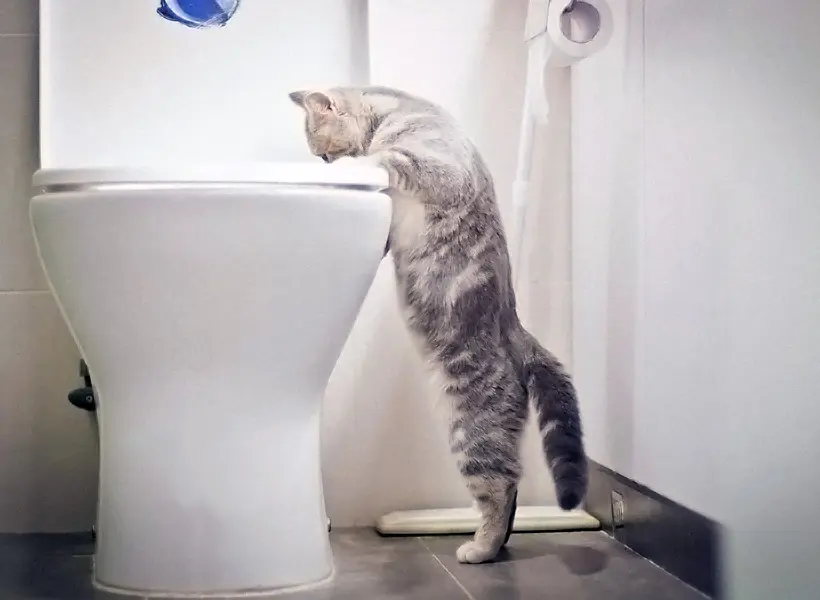Potential Risks of Flushing Cat Poop Down Your Toilet - Tips for Safer Handling
Potential Risks of Flushing Cat Poop Down Your Toilet - Tips for Safer Handling
Blog Article
We've uncovered this great article relating to Can You Flush Cat Poo or Litter Down the Toilet? listed below on the net and reckoned it made sense to share it with you on my blog.

Intro
As feline owners, it's vital to bear in mind how we dispose of our feline good friends' waste. While it may appear practical to purge feline poop down the toilet, this practice can have harmful consequences for both the atmosphere and human health.
Ecological Impact
Purging cat poop presents dangerous virus and parasites right into the water system, posing a substantial threat to aquatic ecosystems. These contaminants can negatively impact aquatic life and compromise water top quality.
Health and wellness Risks
Along with environmental problems, flushing pet cat waste can also present health dangers to human beings. Cat feces may have Toxoplasma gondii, a parasite that can cause toxoplasmosis-- a possibly extreme illness, especially for expectant women and individuals with weakened body immune systems.
Alternatives to Flushing
The good news is, there are safer and a lot more liable means to throw away feline poop. Think about the adhering to choices:
1. Scoop and Dispose in Trash
One of the most typical approach of dealing with cat poop is to scoop it right into an eco-friendly bag and throw it in the trash. Be sure to make use of a committed litter inside story and deal with the waste quickly.
2. Use Biodegradable Litter
Select eco-friendly feline trash made from materials such as corn or wheat. These trashes are eco-friendly and can be safely gotten rid of in the garbage.
3. Bury in the Yard
If you have a yard, take into consideration hiding cat waste in a marked location away from veggie yards and water sources. Make certain to dig deep sufficient to stop contamination of groundwater.
4. Install a Pet Waste Disposal System
Purchase a family pet garbage disposal system particularly created for cat waste. These systems utilize enzymes to break down the waste, minimizing smell and ecological influence.
Conclusion
Accountable family pet ownership expands beyond giving food and sanctuary-- it likewise includes correct waste monitoring. By avoiding purging feline poop down the toilet and opting for alternative disposal approaches, we can decrease our ecological footprint and secure human health.
Why Can’t I Flush Cat Poop?
It Spreads a Parasite
Cats are frequently infected with a parasite called toxoplasma gondii. The parasite causes an infection called toxoplasmosis. It is usually harmless to cats. The parasite only uses cat poop as a host for its eggs. Otherwise, the cat’s immune system usually keeps the infection at low enough levels to maintain its own health. But it does not stop the develop of eggs. These eggs are tiny and surprisingly tough. They may survive for a year before they begin to grow. But that’s the problem.
Our wastewater system is not designed to deal with toxoplasmosis eggs. Instead, most eggs will flush from your toilet into sewers and wastewater management plants. After the sewage is treated for many other harmful things in it, it is typically released into local rivers, lakes, or oceans. Here, the toxoplasmosis eggs can find new hosts, including starfish, crabs, otters, and many other wildlife. For many, this is a significant risk to their health. Toxoplasmosis can also end up infecting water sources that are important for agriculture, which means our deer, pigs, and sheep can get infected too.
Is There Risk to Humans?
There can be a risk to human life from flushing cat poop down the toilet. If you do so, the parasites from your cat’s poop can end up in shellfish, game animals, or livestock. If this meat is then served raw or undercooked, the people who eat it can get sick.
In fact, according to the CDC, 40 million people in the United States are infected with toxoplasma gondii. They get it from exposure to infected seafood, or from some kind of cat poop contamination, like drinking from a stream that is contaminated or touching anything that has come into contact with cat poop. That includes just cleaning a cat litter box.
Most people who get infected with these parasites will not develop any symptoms. However, for pregnant women or for those with compromised immune systems, the parasite can cause severe health problems.
How to Handle Cat Poop
The best way to handle cat poop is actually to clean the box more often. The eggs that the parasite sheds will not become active until one to five days after the cat poops. That means that if you clean daily, you’re much less likely to come into direct contact with infectious eggs.
That said, always dispose of cat poop in the garbage and not down the toilet. Wash your hands before and after you clean the litter box, and bring the bag of poop right outside to your garbage bins.
https://trenchlesssolutionsusa.com/why-cant-i-flush-cat-poop/

We were made aware of that write-up about How to Dispose of Cat Poop and Litter Without Plastic Bags through an acquaintance on our other web blog. Sharing is nice. You just don't know, you may just be helping someone out. We cherish reading our article about How to Dispose of Cat Poop and Litter Without Plastic Bags.
Call Today Report this page